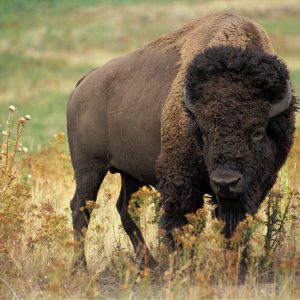Every livestock farmer is first and foremost a pasture farmer. He may make use of the natural grasses or he may improve his pastures by planting special grasses. A good farmer recognises the different grasses and understands how to get the best out of them. He will be able to distinguish between desirable and undesirable plants and he will know the grazing habits of his stock.
The whole art of understanding and managing pastures is highly complex because there are so many parts to it and each of these parts constantly change. For example, there are a great many varieties of plants that are used for grazing in any one area. Each plant has its own rhythm and will react differently to environmental conditions and treatment.
Different stock will graze in a variety of ways. Sheep graze close but cannot handle long grass; goats browse on bushes while cattle eat long grass and are not as selective as sheep.
Natural pasture is also constantly changing and developing according to the environment and number and types of animals that graze it. The changes can be good or bad. They are not always noticeable as they can take place very slowly. There is no doubt that man and animals have the ability to make rapid and bad changes to our native pastures.
A further problem is that farmers rarely have one sort of pasture. Most farms will have some natural pasture and some improved pastures. The natural pasture is often a mix of grasses with some grasses suiting one type of animal and others that suit a different type of stock. The improved pastures on a farm are specially planted to provide grazing at various times of the year and so need quite different management.
By understanding all the different parts that affect grassland, a farmer can begin to effectively manage his most important resource – his grazing.
E-Learning Structure
The duration of this online course is 100 hours. This consists of 8 in-depth lessons:
- Introduction to Pastures
- The Grass Plant
- Pasture Varieties
- Site Considerations
- Establishing New Pastures
- Managing Existing Pastures
- Managing Stock on Pasture
- Pasture Management Work Tasks
Course Aims
- Determine criteria for selecting appropriate varieties of plants for a pasture.
- Identify characteristics of a pasture plant which are relevant to both making an identification, and to considering its value as a pasture species.
- Evaluate the potential of given sites for pasture development programs
- Explain the procedures used in managing the establishment of pasture.
- Explain the techniques used in managing pasture which is already been established
- Assess the commercial and nutritional value of pasture species in the context of farm animal feed, and determine appropriate ways of managing stock.
- Develop an appropriate work program for the management of a pasture by a farmer.
How Does A Warnborough Online Course Work?
You can start the course whenever is convenient for you. You will be studying from home and have access to support from our qualified tutors. Practical exercises and research tasks will be set at the end of each lesson – including an assignment. You will submit this assignment to your course tutor, who will mark your work and give you constructive feedback and suggestions.
If you have any questions please contact us.





